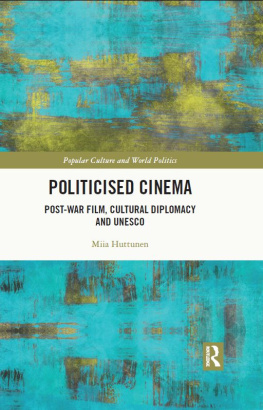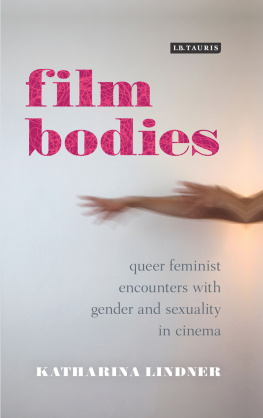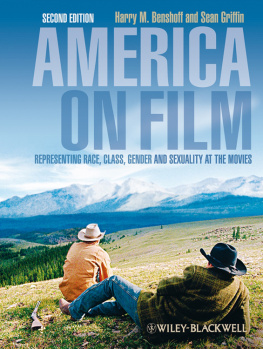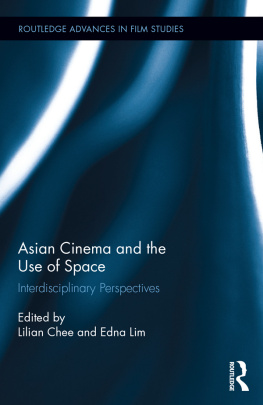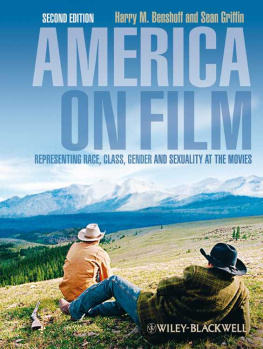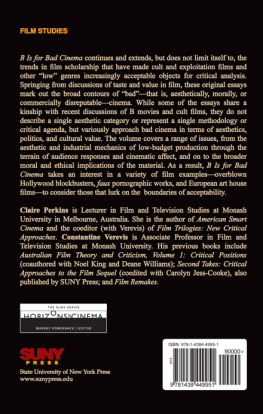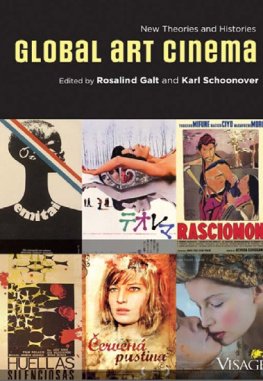EXPLORING MORALITY AND SEXUALITY IN ASIAN CINEMA
Dedicated to Bob and Beth Pugsley
Exploring Morality and Sexuality in Asian Cinema
Cinematic Boundaries
PETER C. PUGSLEY
The University of Adelaide, Australia
First published 2015 by Ashgate Publishing
Published 2016 by Routledge
2 Park Square, Milton Park, Abingdon, Oxon OX14 4RN
711 Third Avenue, New York, NY 10017, USA
Routledge is an imprint of the Taylor & Francis Group, an informa business
Copyright Peter C. Pugsley 2015
Peter C. Pugsley has asserted his right under the Copyright, Designs and Patents Act, 1988, to be identified as the author of this work.
All rights reserved. No part of this book may be reprinted or reproduced or utilised in any form or by any electronic, mechanical, or other means, now known or hereafter invented, including photocopying and recording, or in any information storage or retrieval system, without permission in writing from the publishers.
Notice:
Product or corporate names may be trademarks or registered trademarks, and are used only for identification and explanation without intent to infringe.
British Library Cataloguing in Publication Data
A catalogue record for this book is available from the British Library.
The Library of Congress has cataloged the printed edition as follows:
Pugsley, Peter.
Exploring morality and sexuality in Asian cinema : cinematic boundaries / by Peter C. Pugsley.
pages cm
Includes bibliographical references and index.
Includes flmography.
ISBN 978-1-4724-6670-9 (hardback) ISBN 978-1-4724-6671-6 (ebook) ISBN 978-1-4724-6672-3 (epub) 1. Motion picturesMoral and ethical aspectsAsia. 2. Sex in motion pictures. 3. Motion picturesAsiaHistory and criticism. I. Title.
PN1995.5.P78 2015
791.436538dc23
2015020863
ISBN 9781472466709 (hbk)
ISBN 9781315581682 (ebk)
Contents
List of Figures
1.1 Sequence from Aiyyaa (Showmaker Pictures)
1.2 A hirsute Amitabh Bachchan in Deewaar (Trimurti Films)
1.3 John Abraham flexes in Dostana (Dharma Productions)
1.4 Reshma (Silk) is baptized in the erotic arts in The Dirty Picture (Balaji Motion Pictures)
1.5 Ragini about to submit to Udays charms in Ragini MMS (ALT Entertainment)
1.6 Deepika Padukones too-revealing skirt in Dum Maaro Dum (Ramesh Sippy Ent.)
1.7 The bawdy fountain sequence from Grand Masti (Mehboob Studio)
2.1 Lin forces himself upon Pingguo in Lost in Beijing (Laurel Films)
2.2 The leery Mr Lim in Happy Hotel (Starlight International)
2.3 Xiao-Zhuns not-so virginal whiteness in Blowfish (Happy Pictures Co., Ltd)
2.4 The partial obscuring of Vicky in Millenium Mambo (3H Productions)
2.5 Birthday cake in Love in a Puff (Media Asia Films)
3.1 Presenting the CB Leaf in Ah Boys To Men (J Team Productions)
3.2 Domestic tensions and inappropriate clothing in The Blue Mansion (Tiger Tiger Pictures)
3.3 The Blue-haired seductress in Sejoli (Primeworks Studios)
3.4 Dollah rejects Farahs seduction in Dollah Superstar (Filmscape Malaysia)
4.1 Izumis mirror moment in Guilty of Romance (Django Film)
4.2 Inflation valve in Air Doll (Engine Films)
4.3 Keikos evil mother in Himizu (Gaga Corporation)
4.4 Astride the giant phallus in Wood Job (Django Film)
4.5 The naked Lucius in Thermae Romae (Filmmakers, Tokyo)
5.1 Mi-Yeon crawls to the window in House with a Nice View (Mines Entertainment)
5.2 Young-jak being sexually objectified in The Taste of Money (Above the Line Productions)
5.3 Shy girl Tae-ju in Thirst ( copyright all reserved by CJ Entertainment)
List of Tables
Acknowledgements
My thanks to the Faculty of Arts at The University of Adelaide for awarding me the Special Studies Leave that gave me the opportunity to concentrate on the delivery of this book. Thanks also to the many colleagues, students and Asian cinema aficionados that share my interest in Asian film.
As always, this book could not have arrived without the love and support of my family: Mandy, Charlie and Louisa.
Extensive efforts were made to identify all copyright holders of the images in this book, however it was not always possible to locate them. Any omissions or corrections brought to our attention will be remedied in any future editions of this book.
Introduction
The adage that sex sells has been a long held belief for producers of all kinds of cultural texts: from Shakespeare spicing up the romance in his plays; to ancient Indian writings on the Kama Sutra; to exotic Orientalist paintings from the eighteenth and nineteenth centuries. The arrival of the moving picture soon gave rise to erotic (or sordid) peep shows, but as cinema developed through the twentieth century, cultural attitudes toward sexuality on-screen saw many European cinemas (especially French, Italian and Scandinavian filmmakers) taking a relatively liberal view. Meanwhile the English language national cinemas of Britain, the USA, Canada, and Australia took a more puritan turn by establishing strict cinematic boundaries. The introduction of more clearly-defined classification systems led to some adventurous forms of filmmaking from the 1960s onwards, in which taboos on nudity in particular were lifted. But while this revolution took place, much of Asia was more circumspect, and traditional or conservative values toward overt sexuality (often closely linked to the attitudes of the colonising forces across Asia) were maintained through a balance of official and unofficial codes for what was acceptable as film content.
In all parts of Asia, strict codes can be found governing the types of images that can be screened on film. Past controversies over depictions of nudity, pre-marital relations and miscegenation in what are ostensibly general-release films have impacted heavily on local filmmakers in nations such as China, India, Singapore and Malaysia, subject to strict censorship and successive bans on the screening of their films. Japan, and to a lesser extent, South Korea, have different approaches to on-screen sexuality offering much more liberal environments for filmmakers. Yet the cultural mores of each nations cinema are seldom discussed in academic literature, nor are the more recent, somewhat startling transformations in attitudes and regulations in countries such as India; therefore this book offers the first major study to examine this important cultural shift in Asias film aesthetics. Furthermore, this shift is occurring concurrently with changes to Western representations of sexuality through films that blur the lines between general release films and pornography, such as Michael Winterbottoms 9 Songs (2004), Lars von Triers Antichrist (2009) and Nymphomaniac Vol. 1 (2013), and Abdellatif Kechiches Blue Is the Warmest Colour [La Vie dAdle Chapitres 1 & 2] (2013). Each of these films has enjoyed notoriety because of their graphic sexual content. What sets these films apart from the world of pornography appears to be their narrative aim. Rather than existing simply as a platform for sexual acts (moving to the disrobing of key protagonists as soon as possible), these films propose more complex themes. This is not a book about pornography. What I wish to explore in these pages is the ways in which Asias cinemas deal with sexuality in general release films films that dwell within the boundaries of a nations regulatory codes and are available to general audiences (albeit often within age-restricted categorisations). In reference to Susan Sontag and the complexities in deciding what constitutes a pornographic image, Gronstad sees her view as one where as long as the erotic manifests itself within the context of Aesthetics, it should not only be tolerated but even commended (2012: 121). Sontag privileges representations of sexuality within the canons of high art, where, it seems, anything is permissible and a concept that is commensurate with those that defend the often confrontational images of art house cinema. For many Asian filmmakers though, the plea for leniency in the name of aesthetics may well fail to resonate with the institutions that govern them.


